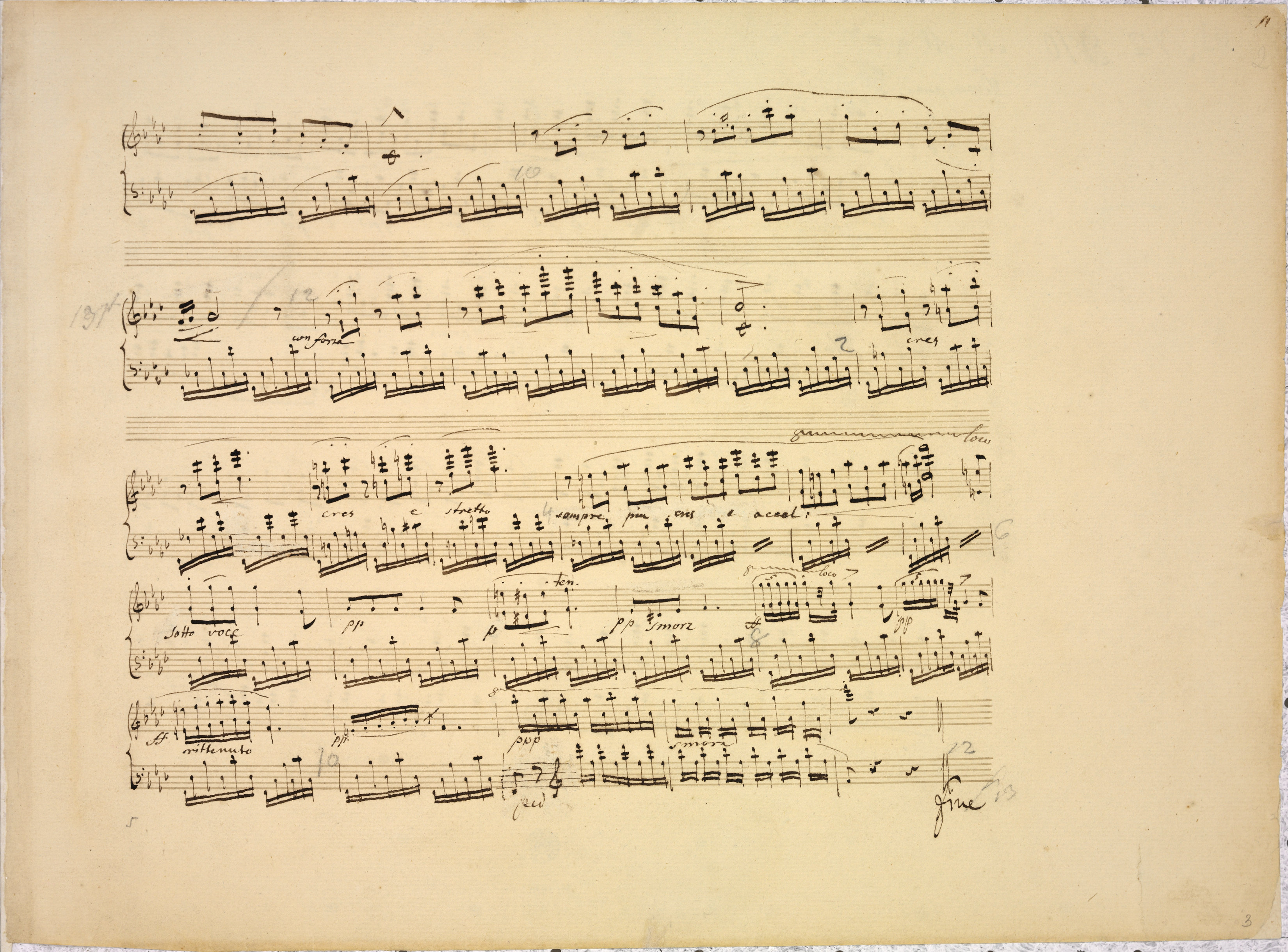



All performance indications in the R.H. – dots, accents and slurs – were added by Chopin in a proofreading of FE (→GE,EE). According to us, the engraver, by adding a short accent to the g1 crotchet, could have misinterpreted Chopin's entry in a proof copy. Therefore, in the main text we propose a long accent – cf. the note to bars 61-62.
Compare the passage in the sources »
category imprint: Interpretations within context; Differences between sources
issues: Long accents, Authentic corrections of FE
notation: Articulation, Accents, Hairpins




